Coal
Type of resources
Available actions
Topics
Keywords
Contact for the resource
Provided by
Years
Formats
Representation types
Update frequencies
Scale
-
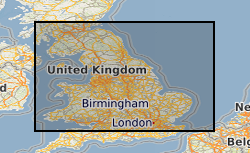
BGS holds a disaster recovery copy of the microfiche of the statutory mine abandonment plans for the Coal Authority. This collection is an incomplete copy of the mine plans deposited with the Coal Authority and held on behalf of the Health and Safety Executive under statutory legislation. Not for public use.
-
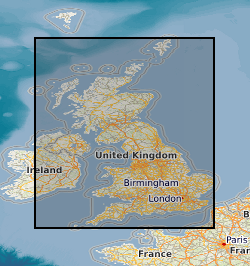
Several coal resource maps for the whole of the UK have been produced by the British Geological Survey as a result of joint work with Department of Trade and Industry and the Coal Authority. The UK Coal Resource for new exploitation technologies map is a map of Britain depicting the spatial extent of the principal coal resources overlayed with existing workings and potential new technologies for accessing the resource. The map also shows the areas where coal and lignite are present at the surface and also where coal is buried at depth beneath younger rocks. The project covers all onshore coalfields in the UK, including Northern Ireland. It includes coal under estuaries and near-shore areas that can practically be reached by land-based directional drilling. No data more than 5 km offshore were considered. The maps are intended to be used for resource development, energy policy, strategic planning, land-use planning, the indication of hazard in mined areas, environment assessment and as a teaching aid. In addition to a summary map at 1:750000 scale for Britain data also exists for each technology of 21 individual regions or coal fields at a scale of 1:100000. The data was published in printed map form for the summary map, inkjet plots for the 42 individual maps and as PDF documents on CD. The maps were accompanied by BGS report CR/04/015N, "UK Coal Resource for New Technologies, Final Report". The work was initiated in April 2002 and completed in October 2003. The data was also simplified for inclusion in the Britain Beneath your Feet atlas 2005.
-
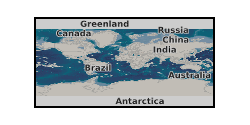
[This metadata record has been superseded, see http://data.bgs.ac.uk/id/dataHolding/13480158] This dataset is an archive of original data for the geophysical logging of boreholes drilled by the National Coal Board (NCB) and its successor, British Coal Corporation (BCC). Data coverage is UK wide and dates from the 1970's to the privatisation of the coal mining industry, in 1994. The dataset includes approximately 2000 field data recording tapes and processed data tapes. The processed data tapes are at various stages of processing and consist of edited data and computed (CSU) data (not available for all boreholes). The data are kept as archive copies. The data are owned by the Coal Authority (CA), as successor to the NCB and BCC, BGS being the custodian under an agreement with the Coal Authority. No full catalogue or index available yet.
-
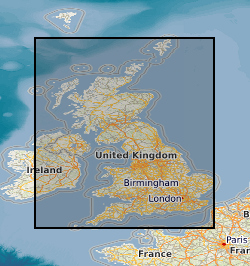
Coal resource maps for the whole of the UK have been produced by the British Geological Survey as a result of joint work with Department of Trade and Industry and the Coal Authority. The Coal Resources Map is a Map of Britain depicting the spatial extent of the principal coal resources. The map shows the areas where coal and lignite are present at the surface and also where coal is buried at depth beneath younger rocks. The maps are intended to be used for resource development, energy policy, strategic planning, land-use planning, the indication of hazard in mined areas, environment assessment and as a teaching aid. In addition to a general map of coal resources for Britain data also exists for the six inset maps: Scotland; North-East; North-West; East Pennines; Lancashire, North Wales and the West Midlands; South Wales, Forest of Dean and Bristol. Available as a paper map, flat or folded, from BGS Sales or as a pdf on a CD if requested.
-
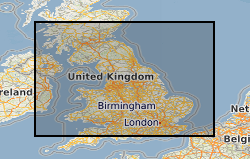
This data set is an archive of original data for the seismic reflection surveys conducted by the National Coal Board (NCB) and its successor, British Coal Corporation (BCC). The data consists of observers' logs, surveyors' reports, (some 3000 files of written records), location data, field data records and processed data. The processed data are at various stages of processing from demultiplexed field data to migrated stack (not all available for all profiles). The data were originally recorded on over 13000 tapes and have been transcribed to more modern media in Tape Image Format (TIF/ARC) to retain the tape block integrity. These data are owned by the Coal Authority (CA), as successor to the NCB and BCC, BGS being the custodian under an agreement with the CA. The Coal authority surveys cover various areas in the UK, shot and processed or reprocessed between 1973-94. There is at an initial estimate half a terabyte of Coal Authority data. The seismic data will be stored as standard format SEGY files which can be read by a variety of software packages designed to manipulate seismic data. Catalogue available.
-
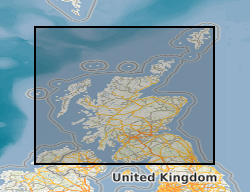
The collection includes colour microfilm aperture card copies of 7,170 plans of mine workings for coal and oil shale dating from 1872 onwards deposited on abandonment of a mine in compliance with the Coal Mines Regulation Act. An additional c.5,000 coal 'working' plans, mostly pre-dating 1872, formerly belonging to British Coal, have been added to the abandonment plan collection. The latter are held as black & white microfilm aperture cards. The collection includes plans of workings for other minerals, notably ironstone, where worked with coal. The microfilms are held on behalf of the Coal Authority who hold the original plans on behalf of the Health & Safety Executive (HSE). Original plans are held by the Coal Authority, Mansfield. No complete digital index held by BGS. An up to date finding aid is provided by the Coal Authority's paper 'Catalogue of Plans of Abandoned Mines'. The collection is believed to be fairly complete for mines abandoned since the 1872 Act. Plans were added from the British Coal plan collections to fill gaps in holdings, particularly for mines abandoned prior to 1872. Relates to coalfield areas of Central Scotland.
-

The collection consists of borehole drill logs, site plans, borehole location plans, geological plans and completion plans for opencast coal sites in Scotland and Northern England. It includes records deposited by the Directorate of Opencast Coal Production (DOCP) and its successors, National Coal Board (NCB), British Coal and numerous private and licensed opencast mine. The NCB Scottish Area records are arranged by the NCB opencast site number. Many records of cored 'diamond' boreholes are held in the BGS Scottish Borehole Journal records. Northern England opencast records are mainly held with the ex-Newcastle Borehole Records. Copies of completion plans for Scotland are also held in the Coal Mine Abandonment Plan collection available on microfilm aperture cards. Opencast sites are indexed in the Land Survey Record Index (LSRI) database. The cored 'diamond' boreholes are indexed on Single Onshore Borehole Index (SOBI).
-
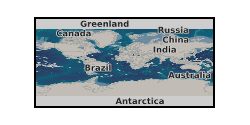
Supplementary material for published paper, Early Paleogene wildfires in peat-forming environments at Schoningen, Germany by BE Robson et al, http://doi.org/10.1016/j.palaeo.2015.07.016 NERC grant abstract: Human activity has led to an increase in pCO2 and methane levels from pre-industrial times to today. While the former increase is primarily due to fossil fuel burning, the increase in methane concentrations is more complex, reflecting not only direct human activity but also feedback mechanisms in the climate system related to temperature and hydrology-induced changes in methane emissions. To unravel these complex relationships, scientists are increasingly interrogating ancient climate systems. Similarly, one of the major challenges in palaeoclimate research is understanding the role of methane biogeochemistry in governing the climate of ice-free, high-pCO2 greenhouse worlds, such as during the early Paleogene (around 50Ma). The lack of proxies for methane concentrations is problematic, as methane emissions from wetlands are governed by precipitation and temperature, such that they could act as important positive or negative feedbacks on climate. In fact, the only estimates for past methane levels (pCH4) arise from our climate-biogeochemistry simulations wherein GCMs have driven the Sheffield dynamic vegetation model, from which methane fluxes have been derived. These suggest that Paleogene pCH4 could have been almost 6x modern pre-industrial levels, and such values would have had a radiative forcing effect nearly equivalent to a doubling of pCO2, an impact that could have been particularly dramatic during time intervals when CO2 levels were already much higher than today's. Thus, an improved understanding of Paleogene pCH4 is crucial to understanding both how biogeochemical processes operate on a warmer Earth and understanding the climate of this important interval in Earth history. We propose to improve, expand and interrogate those model results using improved soil biogeochemistry algorithms, conducting model sensitivity experiments and comparing our results to proxy records for methane cycling in ancient wetlands. The former will provide a better, process-orientated understanding of biogenic trace gas emissions, particularly the emissions of CH4, NOx and N2O. The sensitivity experiments will focus on varying pCO2 levels and manipulation of atmospheric parameters that dictate cloud formation; together, these experiments will constrain the uncertainty in our trace greenhouse gas estimates. To qualitatively test these models, we will quantify lipid biomarkers and determine their carbon isotopic compositions to estimate the size of past methanogenic and methanotrophic populations, and compare them to modern mires and Holocene peat. The final component of our project will be the determination of how these elevated methane (and other trace gas) concentrations served as a positive feedback on global warming. In combination our work will test the hypothesis that elevated pCO2, continental temperatures and precipitation during the Eocene greenhouse caused increased wetland GHG emissions and atmospheric concentrations with a significant feedback on climate, missing from most modelling studies to date. This work is crucial to our understanding of greenhouse climates but such an integrated approach is not being conducted anywhere else in the world; here, it is being led by international experts in organic geochemistry, climate, vegetation and atmospheric modelling, and palaeobotany and coal petrology. It will represent a major step forward in our understanding of ancient biogeochemical cycles as well as their potential response to future global warming.
-
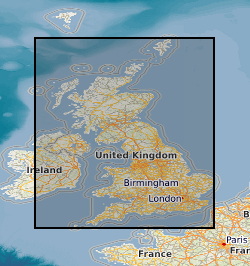
[This metadata record has been superseded, see http://data.bgs.ac.uk/id/dataHolding/13480158] The map shows the location and names of boreholes with digital geophysical logs acquired by the former National Coal Board and British Coal during their exploration for coal in the UK. Ownership of UK coal exploration data was transferred to the Coal Authority (Coal Authority) following privatisation of the UK coal industry. The Coal Authority have appointed the British Geological Survey as custodian of this important national geological data archive. These data are in general publicly available; however, access to data within active mining licences is restricted in that it requires the consent of the mining licensee. The Coal Authority data archive includes digital data for some of the geophysical borehole logging. These are mainly in the form of original field tapes; however, also available are some data transcribed onto more modern media during BGS projects. The BGS will be pleased to provide information on data availability for named boreholes or within specified geographic areas, together with cost estimates and options for supplying copies.
-
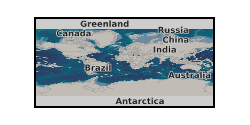
H2 adsorption data on sub-bituminous coal as a function of pressure. Hydrogen flooding of a coal core. Micro CT imaging of the effect on coal swelling after hydrogen injection. Hydrogen is trapped, and no swelling is observed indicating that coal might be a good candidate for the storage of hydrogen.
 NERC Data Catalogue Service
NERC Data Catalogue Service